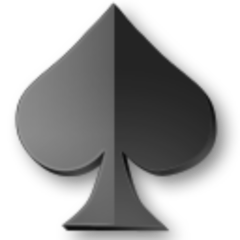Domino is a set of interlocking rectangular tiles bearing identifying markings on one face and blank or identically patterned on the other. They are usually arranged edge to edge in long lines, and when the first domino is tipped over it causes the next domino in line to tip, and so on until all the dominoes topple over. Very complex designs can be made using this technique, and the phenomenon has given rise to the expression “domino effect”—a single event that leads to much greater—and sometimes catastrophic—consequences.
Domino has been around for centuries, but the modern version was introduced in the mid-18th century. Like playing cards, they are used to play games such as Blocking and scoring games, and a variety of solitaire and trick-taking games. They were also used as an alternative to playing cards in places where religious proscriptions prohibited the use of them.
A domino show is a live performance of an intricate sequence of domino reactions and effects. These shows often involve hundreds—sometimes thousands—of dominoes set up in a carefully planned sequence, with each domino carefully placed so that when the first one is tipped over it will cause the rest to fall. Builders compete to see who can create the most spectacular domino reaction before a live audience of fans.
Hevesh, a domino artist and the creator of the popular Domino magazine, says that there are many different ways to build a great display. But the key to making it look good is to plan out the entire sequence before starting to set up the pieces. Hevesh makes a test version of each section of the design and films it in slow motion, which allows her to see exactly what needs to be corrected.
Once she’s satisfied with the results, Hevesh sets up the full installation. She starts with the 3-D sections, then adds flat arrangements and finally the lines of dominoes that connect them all together. She usually starts with the largest sections and works her way down to the smallest. She also tests each piece to make sure it will work before putting it into place.
While domino art is impressive, the most popular use of Domino is as a tool for creative home and garden projects. The magazine has a huge following for its ideas on how to decorate rooms and landscape gardens with straight or curved lines, grids that form pictures when they fall, and even 3D structures like towers and pyramids.
Originally a career mercenary, Domino joined the mutant team X-Force after a mission went awry, and she remained an ally of the time-traveling mutant Cable (Nathan Summers) for a while. She later joined Storm’s security task force on the mutant utopia Utopia, and has worked with various incarnations of X-Men. She is able to manipulate the laws of probability to shift odds in her favor, and is a master weapons expert and proficient linguist. She’s also a skilled martial artist and a superb athlete.
